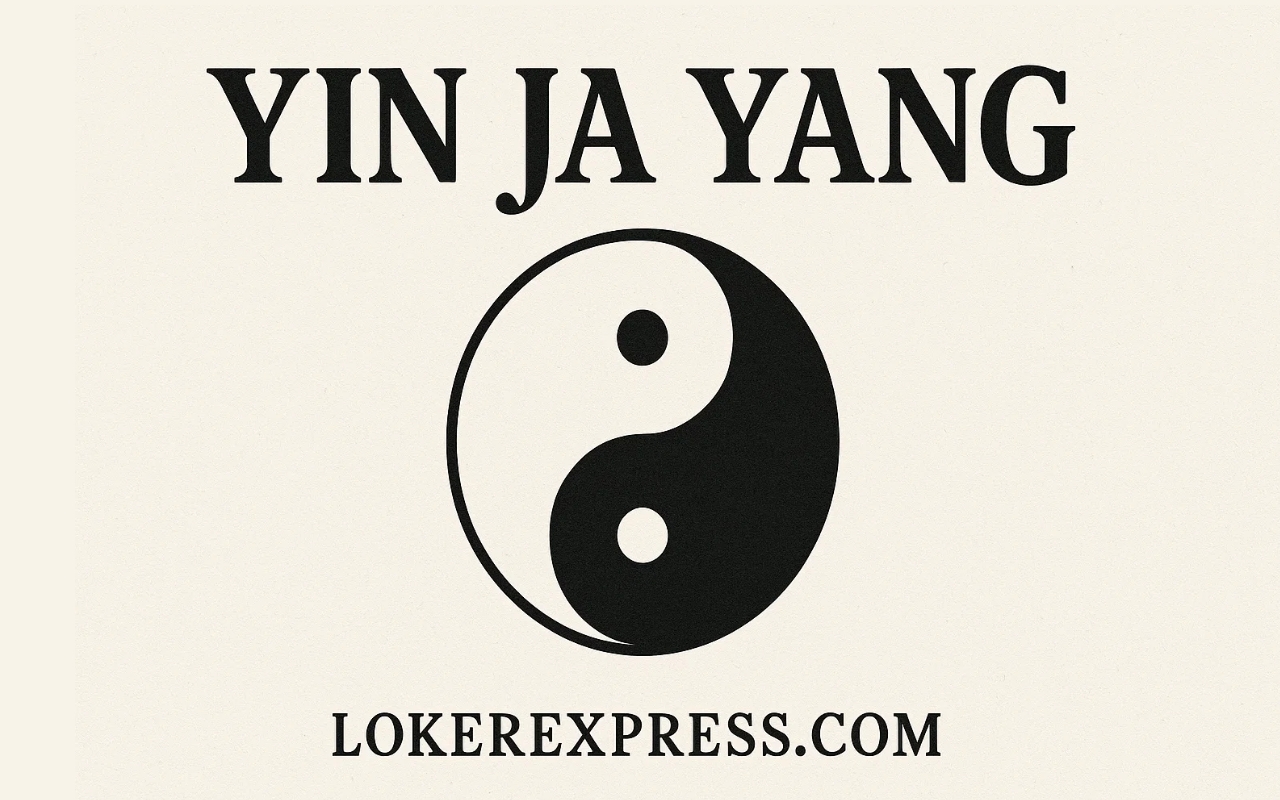Introduction: The Power of Balance in a Modern World
In our fast-paced, highly connected world, people are increasingly looking for ways to find peace, clarity, and equilibrium. This has led many to explore ancient philosophies that offer timeless wisdom. One such concept is Yin Ja Yang—a stylized term rooted in the well-known duality of yin and yang from Chinese philosophy. It encapsulates the idea of dynamic balance, showing us how seemingly opposite forces are not only interconnected but essential to one another. Understanding and mastering Yin Ja Yang can guide you toward a harmonious lifestyle where your physical health, emotional state, and spiritual energy align as one.
What Is Yin Ja Yang?
“Yin Ja Yang” draws inspiration from the classical concept of yin-yang, where yin represents passive, cool, dark, and feminine energy, and yang represents active, warm, bright, and masculine energy. These two forces are not adversaries but complementary elements. When they work in harmony, they create a balanced system, whether it be in nature, the human body, relationships, or spiritual awareness.
Rather than seeing life in absolutes—black or white, good or bad—Yin Ja Yang invites you to see the gray in between. The famous yin-yang symbol (the Taijitu) illustrates this with a swirling circle of black and white, each containing a dot of its opposite. This image is a visual metaphor for how life is constantly shifting, and how each force contains a seed of the other.
Origins and Philosophical Foundations
The concept of yin and yang dates back over 3,000 years to ancient Chinese philosophy, particularly within Taoism and Confucianism. The Yin-Yang School, led by thinkers like Zou Yan during the Warring States period, synthesized natural observations into a system explaining everything from the cosmos to human behavior.
Taoism, in particular, emphasizes living in accordance with the Tao—the way or path of the universe. Yin and yang are seen as the essential energies flowing through the Tao. They are never static; they ebb and flow, like tides or the changing seasons. Harmony, from a Taoist perspective, is achieved when we allow ourselves to flow with these changes rather than resist them.
In Confucianism, the duality of yin and yang is applied to social roles, ethics, and order, while Traditional Chinese Medicine (TCM) uses it as a foundation for diagnosis and treatment, seeing health as a matter of balancing these two forces within the body.
Yin Ja Yang in Physical Health and Wellness
The Body as a Mirror of Energy
In the realm of Traditional Chinese Medicine, a balanced body is one where yin and yang are in constant, dynamic harmony. Illness is seen as a result of imbalance: too much yang leads to heat-related conditions like inflammation or high blood pressure, while excess yin can cause coldness, fatigue, or fluid retention.
Qi, or life force, is the energy that flows through pathways in the body called meridians. This energy has both yin and yang qualities, and any disruption in its flow can lead to illness. Acupuncture, herbal medicine, tai chi, and dietary therapy are all tools used in TCM to restore equilibrium.
The Five Elements
In addition to yin and yang, TCM also integrates the Five Elements—wood, fire, earth, metal, and water—which interact with each other and represent different organs, seasons, and energies. Each element has both yin and yang aspects. Understanding how these forces relate allows practitioners to tailor healing practices based on a person’s specific imbalances.
Mental and Emotional Harmony Through Yin Ja Yang
Emotional Balance
Emotions also have yin and yang qualities. Yin emotions might include sadness, introspection, and stillness, while yang emotions might involve joy, anger, or excitement. Neither is “bad”—each has its time and place. Problems arise when one dominates or is repressed.
To master emotional balance:
- Embrace stillness when overwhelmed.
- Express energy when it feels stagnant.
- Reflect deeply, then act decisively.
This cyclical approach honors the full emotional spectrum, helping individuals to avoid burnout, anxiety, or depression by flowing naturally between emotional states.
Mental Clarity
Yang energy sharpens focus, supports logic, and aids in goal-setting. Yin energy promotes intuition, creativity, and rest. A person dominated by yang might be highly productive but disconnected from their inner voice. Too much yin can lead to stagnation and lack of motivation.
Meditation, journaling, breathwork, and periodic digital detoxes are practices that recalibrate mental energy, drawing from both ends of the spectrum.
Spiritual Dimensions of Yin Ja Yang
Spirituality, like every other aspect of life, also contains duality. Yin represents stillness, contemplation, and the feminine divine, while yang stands for expression, action, and the masculine divine.
Daily Practices to Cultivate Spiritual Balance
- Yin activities: silent meditation, nighttime rituals, reading sacred texts, gentle breathwork.
- Yang activities: chanting, dance, singing bowls, walking meditation.
The key is to find a rhythm that resonates with your natural spiritual energy. For example, you might begin the day with yang (movement, affirmations) and wind down with yin (reflection, gratitude).
How to Integrate Yin Ja Yang into Your Life
Morning and Evening Rituals
Create a structure that mirrors natural energy cycles:
- Morning (yang): Get sunlight, move your body, drink warm tea, set intentions.
- Evening (yin): Dim the lights, unplug from devices, meditate, take a warm bath.
Exercise and Movement
Balance high-intensity (yang) workouts like cardio or weightlifting with restorative (yin) practices like yin yoga, tai chi, or qi gong. This protects your joints, aids recovery, and improves overall energy flow.
Diet and Nutrition
Food also holds yin or yang energy. Warm, spicy foods like ginger or cinnamon are yang. Cooling foods like cucumber or tofu are yin. Eat seasonally:
- Summer: lighter, yin-focused foods.
- Winter: warming, yang-heavy meals.
Hydration and meal timing also matter. Yang digestion works best earlier in the day, while evening is a time for lighter meals that align with yin’s quieter nature.
The Role of Nature and Seasons
Nature is the ultimate expression of yin and yang:
- Spring and summer are yang seasons: growth, action, movement.
- Autumn and winter are yin seasons: slowing down, conserving energy.
Aligning your daily and yearly rhythms with the seasons allows your body to heal and your mind to stay focused. For example, winter is a time for deep rest and reflection. Forcing productivity in winter can cause burnout and imbalance.
Spending time in nature also resets your internal rhythms. Forest walks, sunbathing, and stargazing are subtle but powerful ways to realign.
Relationships and Social Life
Yin ja yang also applies to human connection. In healthy relationships:
- One partner may take on a more nurturing (yin) role.
- The other may embody assertiveness and protection (yang).
These roles may shift, evolve, and reverse over time. Problems occur when there is rigidity or dominance. Communication, mutual respect, and emotional intelligence help ensure the flow remains healthy.
In friendships or work dynamics, yin people are often listeners and empaths; yang individuals might be leaders or motivators. Balance between these personalities creates synergy and mutual growth.
Challenges and Misunderstandings
Mistaking Activity for Productivity
In a culture obsessed with achievement, many people overuse yang energy. Constant motion, goal-chasing, and hustle culture lead to exhaustion. Yin energy—rest, softness, reflection—is wrongly labeled as laziness.
Suppressing Emotions
Men, especially, are often socialized to suppress yin traits (empathy, receptiveness), leading to emotional disconnection. Meanwhile, women may be criticized for displaying too much yang (assertiveness), causing inner conflict.
Recognizing these imbalances is the first step toward healing.
Practical Steps for Mastery: 30-Day Yin Ja Yang Plan
| Day | Yin Focus | Yang Focus |
|---|---|---|
| 1-5 | Journal 10 mins daily | Morning stretches |
| 6-10 | Nighttime meditation | Declutter your space |
| 11-15 | Gentle yoga | Creative writing or painting |
| 16-20 | Prepare warm, balanced meals | Socialize or call a friend |
| 21-25 | Read under candlelight | Nature walk with affirmations |
| 26-30 | Detox digital input | Launch a passion project |
The goal is not to perfect balance but to experiment, observe, and refine.
Read More: BetterThisCosmos Posts by BetterThisWorld | Mindful Living Guide 2025
Conclusion: Living the Yin Ja Yang Way
Mastering Yin Ja Yang is not about reaching a final destination. It’s a daily dance between doing and being, movement and stillness, expression and introspection. By learning to recognize which energy is dominating at any given moment—and adjusting your habits, thoughts, and emotions accordingly—you create a life that is not only balanced but also deeply fulfilling.
Embracing Yin Ja Yang is a lifelong journey. As you practice awareness and adjust to the rhythms of your own energy, you begin to live in harmony not just with yourself, but with the world around you.

